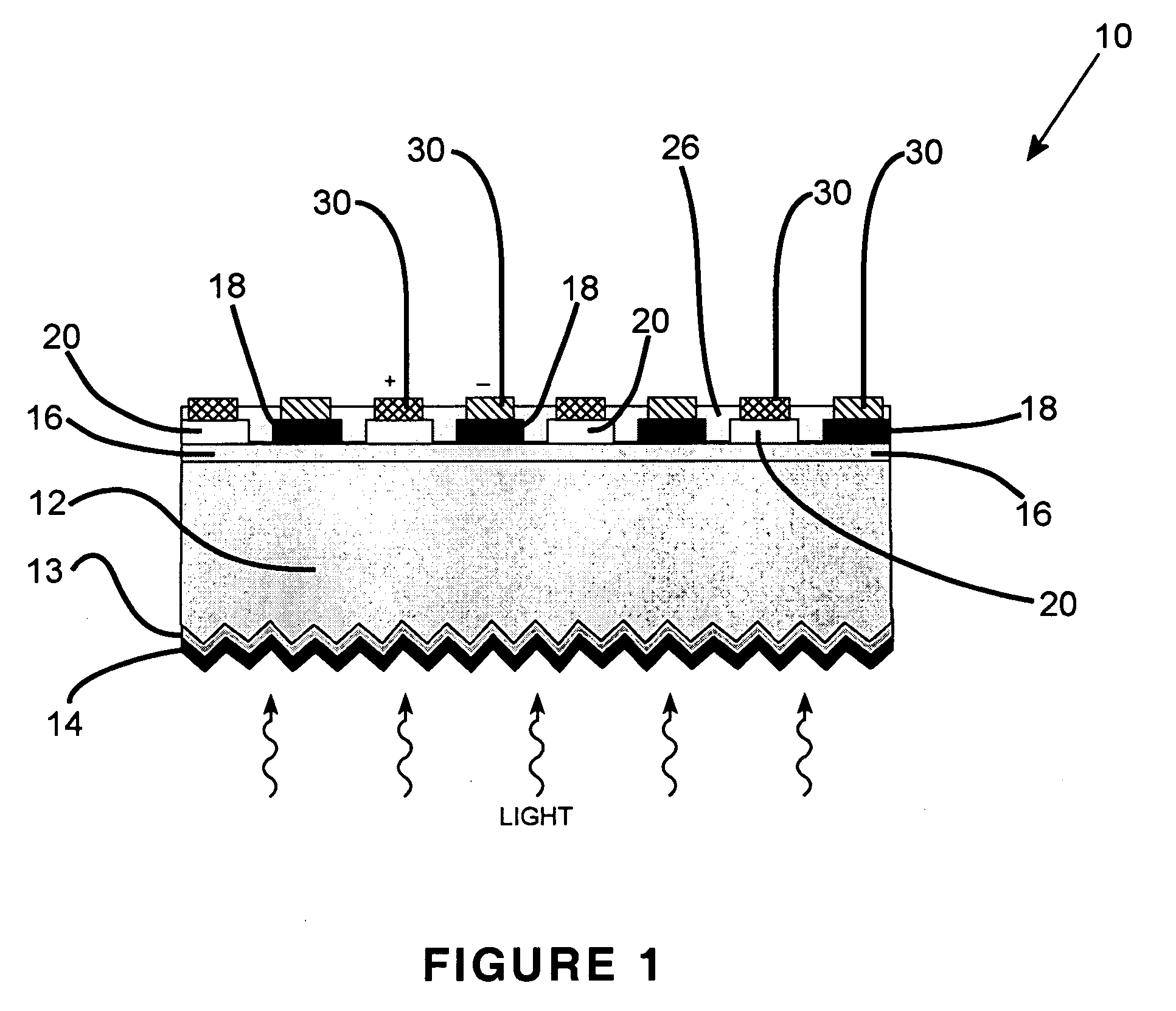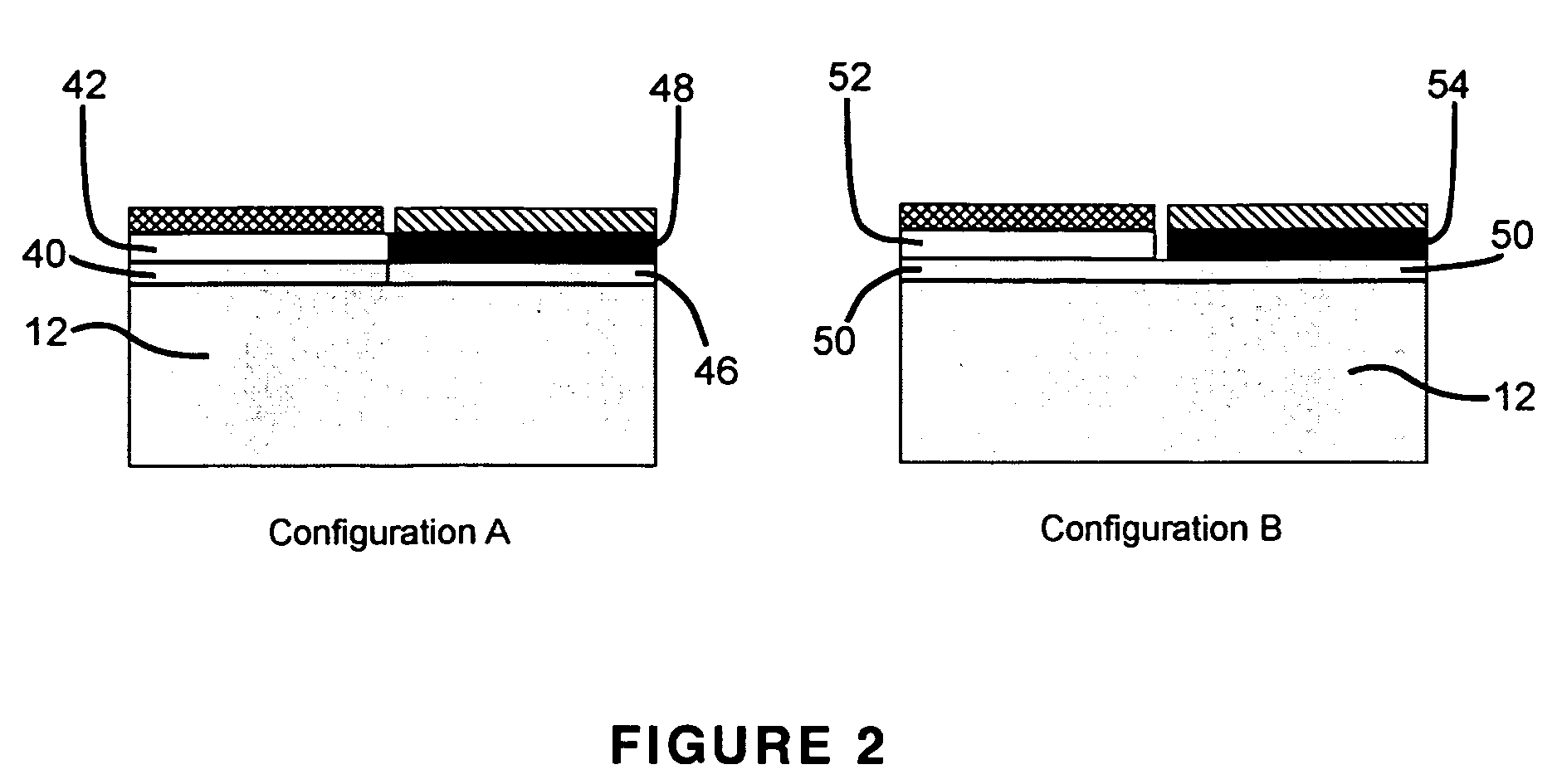Solar cell
a solar cell and film backheterojunction technology, applied in the field of thin film backheterojunction, can solve the problems of reducing the photogeneration of electron-hole pairs in the active silicon layer of the device, reducing the series resistance, and reducing the size of electrical contacts and buses on the front surfa
- Summary
- Abstract
- Description
- Claims
- Application Information
AI Technical Summary
Benefits of technology
Problems solved by technology
Method used
Image
Examples
Embodiment Construction
[0021] The present invention provides a novel low-temperature, thin film back-heterojunction, amorphous-crystalline silicon photovoltaic device. The device disclosed herein is a departure and an improvement over the existing art of back-contact photovoltaic devices as well as heterojunction photovoltaic devices. The device disclosed herein uses low temperature thin film back-heterojunctions which are prepared by low temperature deposition of undoped and doped amorphous silicon on crystalline silicon, in contrast to the high temperature diffused back junctions in existing devices.
[0022] Referring first to FIG. 1, a thin film back-heterojunction, amorphous-crystalline silicon photovoltaic device shown generally at 10 includes a crystalline silicon wafer 12 which may have a thickness in a range from about 100 μm to about 300 μm.
[0023] The front surface of the crystalline silicon wafer 12, which is often textured for light trapping, usually includes a passivating layer 13 and / or an an...
PUM
| Property | Measurement | Unit |
|---|---|---|
| temperatures | aaaaa | aaaaa |
| thickness | aaaaa | aaaaa |
| temperature | aaaaa | aaaaa |
Abstract
Description
Claims
Application Information
 Login to View More
Login to View More - R&D
- Intellectual Property
- Life Sciences
- Materials
- Tech Scout
- Unparalleled Data Quality
- Higher Quality Content
- 60% Fewer Hallucinations
Browse by: Latest US Patents, China's latest patents, Technical Efficacy Thesaurus, Application Domain, Technology Topic, Popular Technical Reports.
© 2025 PatSnap. All rights reserved.Legal|Privacy policy|Modern Slavery Act Transparency Statement|Sitemap|About US| Contact US: help@patsnap.com



